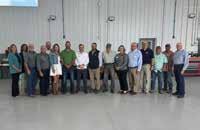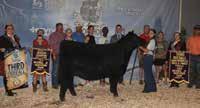


















10600 U.S. Highway 42
Marysville, Ohio 43040
Phone 614-873-6736 • Fax 614-873-6835
www.ohiocattle.org
cattle@ohiocattle.org
Editor Elizabeth Harsh
Managing
Editor Hannah Weymouth

Ohio Cattleman magazine (USPA: 020-968, ISSN: 1543-0588) is published six times per year: Winter issue, mailed in January; Expo preview issue, mailed in February; Spring issue, mailed in April; Summer issue, mailed in July; Early Fall issue, mailed in September; and Late Fall issue, mailed in October; for $15 a year to OCA members only. It is dedicated to reporting facts about Ohio’s cattle including marketing, production and legislative news. All editorial and advertising material is screened to meet rigid standards, but publisher assumes no responsibility for accuracy or validity of claims. All rights reserved. Circulation for the issue is 3,166.
Published at Minster, Ohio 45865 by the Ohio Cattlemen’s Association, 10600 US Highway 42, Marysville, Ohio 43040. Periodical postage paid at Marysville, Ohio and at additional offices. POSTMASTER: Send address changes to Ohio Cattleman, 10600 US Highway 42, Marysville, Ohio 43040. CHANGING YOUR ADDRESS: Please send old as well as new address to Ohio Cattleman, 10600 US Highway 42, Marysville, Ohio 43040.
Advertising
To schedule advertising write to: Ohio Cattleman, 10600 US Highway 42, Marysville, Ohio 43040, or call 614873-6736. All advertising material for the Winter Issue must be received by Nov. 29, 2024. Ohio Cattleman Advertising Rates
Full Page $460 2/3 Page $345
1/2 Page $260 1/3 Page $175
1/4 Page $145 1/8 Page $105 Business Card $65 Classified Ad $50 Four Color $270
One Additional Color $90
Ohio Cattlemen’s Association members will receive a 10% discount when advertising their farm products, such as cattle, hay, corn, etc. ...
Call today to place your ad: 614-873-6736
Elizabeth Harsh Executive Director
Ron Windnagel Director of Accounting & Operations
Hannah Weymouth Manager of Communications & Managing Editor
Kelly Keirn Manager of Consumer Program & Digital Marketing
Anna Gest Manager of Nutrition Education Programs
Tiffany Arnett Office & Project Manager
Morgan Hoppes Manger of Youth Education & Development Programs
By Mark Goecke, OCA President
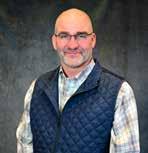
We have all heard or stated at the end of a sentence or conversation the phrase “ … and that’s a fact”. The phrase can also be used at the beginning of a sentence or conversation ...”As a matter of fact” or … ”The fact of the matter is”. It seems to me that nowadays the word fact doesn’t seem to carry as much validity as it once did.
Years ago I, like many others, would receive most of the current news and events through the newspaper and different published periodicals. Growing up, my siblings and I didn’t watch much news on TV because it came on at 6.00 p.m. and we were still outside doing chores and caring for our cattle. Therefore, reading became something we were all accustomed to.
Newspaper articles always seemed to give credit to where the information was derived and the writer of the article was also published. Books and periodicals contained asterisks and footnotes to reference the source of information obtained for the printed articles. And to top it all off, my parents purchased a set of encyclopedias called, believe it or not, The World Book of Knowledge, which in hindsight was a very primitive form of google. Those books, labeled A through Z contained many, many what I would call facts.
Today, and I am guilty of it too, much of our free time is spent looking at a computer screen or hand held device scrolling through an unlimited amount of information, some useful but most of it not. A lot of what is now ‘posted’ is simply just that, posted words that carry no factual meaning and can be originated from anywhere in the world by someone with no credentials or knowledge of the subject. While it can be enjoyable to read some things posted, it can also be detrimental because many in the general public begin to think everything on the internet is true and factual.
If we are bombarded with the same information over and over, we begin to think it must be true, otherwise it wouldn’t be on social media. Hence facts are misinterpreted or really don’t even exist. Today there are many areas of our culture where using unfactual or misleading information is a normal day to day routine. I’m sure we have all witnessed this, and with the election season in full swing, we are once again being subjected to information that may or may not be factual. Hopefully we will be able to discern between fact and fiction.
On a similar front, is a situation that is occurring involving the Western Lake Erie Basin in the Northwestern part of our state. An environmental group, along with the City of Toledo and the Board of Lucas County Commissioners have filed a lawsuit against the US EPA. In short, the plaintiff’s contention is that the defendants have failed in response to protect Lake Erie and its surrounding population from harmful algae blooms generated throughout the summer months. Of course, the plaintiffs are blaming agriculture and specifically animal agriculture for everything possibly wrong with the basin’s ecosystem. So the plaintiff, a government entity, is suing another government entity over which agency has the correct facts about the true causes of, if any, harmful algae blooms. As a matter of fact, OCA, along with other state and national agricultural commodity groups, have pledged time and resources to making sure the facts are presented in this case on behalf of all involved. OCA is keeping a close watch on the situation and will keep you updated as events unfold.
In closing, I hope everyone has a safe fall season whether you’re calving cows, weaning feeder calves or running a combine. Just remember, tomorrow will be a new day that can be filled with optimism, and that’s a fact.

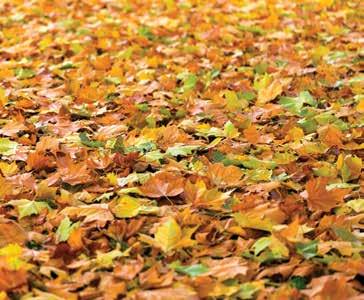
Your #1 Animal Health Product Headquarters
• GREAT EVERYDAY LOW PRICES on vaccines • parasite control • prescriptions identification • breeding and calving supplies calf care • fly & pest control • show supplies farm supplies • new items and more
• FREE Same Day Shipping on your qualifying $75+ order
• Knowledgeable & Friendly Service
• Check out our SUPER CATALOG online or request a printed catalog online or by phone.


For current store hours, events and details, follow us on Facebook or contact the store nearest you:
2780 Richville Dr. SE Massillon, OH 44646 330-834-9252
82,000 sq. ft. Warehouse and Offices massillon@pbsanimalhealth.com
23507 U.S.R. 23 South Circleville, OH 43113 740-474-7394 circleville@pbsanimalhealth.com

3188 Lincoln Way East Wooster, OH 44691 330-262-1596 wooster@pbsanimalhealth.com
2029 U.S.R. 127 St. Henry, OH 45883 419-925-8800 sthenry@pbsanimalhealth.com
2721 Progress Way Wilmington, OH 45177 937-382-4572 wilmington@pbsanimalhealth.com







President • Mark Goecke
419-233-3101, goeckefarms@gmail.com
Vice President • Lindsey Hall 937-763-8115, lindseycgrimes@gmail.com
Treasurer • Linde Sutherly 937-875-0670, linde@lindeslivestockphotos.com
Past President • Tom Karr
740-591-9900, tom@karrcontracting.com

Shane Riley Director At-Large
Washington C.H. • Term expires 2026 740-572-2044, shane.rileywch@gmail.com
Jim Rogers Director At-Large Logan • Term expires 2024 740-591-7311, jrogers@reedbaur.com
Frank Phelps Director At-Large
Belle Center • Term expires 2025 937-539-1442, frankph@watchtv.net
Jaymes Maciejewski District 1
New Bavaria • Term expires 2026 309-222-0850, jaymes.maciejewski@gmail.com
Andy Lohr District 2
Bucyrus • Term expires 2024 419-569-3613, andylohr61@gmail.com
John Ferguson District 3
Chardon • Term expires 2025 440-478-0782, john@fergusonshowcattle.com
Tyler Humphrey District 4
Harrod • Term expires 2026 419-230-3450, humphreyag@gmail.com
Jason Dagger District 5
Cable • Term expires 2024 937-604-8820, jason.dagger@rwe.com
Kirsten Nickles District 6
Wooster • Term expires 2025 330-345-0477, KNickles@certifiedangusbeef.com
Joe Grubbs District 7
Kensington • Term expires 2026 330-771-0767, jgrubbs0608@gmail.com
Linde Sutherly District 8
New Carlisle • Term expires 2024 937-875-0670, linde@lindeslivestockphotos.com
Jim Jepsen District 9
Amanda • Term expires 2025 614-560-5919, jepsen.drfarms@gmail.com
Austin Cole District 10
West Alexandria • Term expires 2026 937-620-6584, austin.cole31@yahoo.com
Ryan Bapst District 11
Waverly • Term expires 2024 740-835-9789, ryanbapst@gmail.com
Dale Taylor • District 12
Bidwell • Term expires 2025 740-709-6461,daletaylorfarming@gmail.com
By Elizabeth Harsh, Ohio Cattleman Editor

A recent drive to northeast Ohio to attend a field day reinforced how varied this summer’s rainfall totals have been across the state. Cattle families in southern and southeastern Ohio are struggling to manage through a drought of historical proportions. According to the U.S. Drought Monitor in late August, a D4 - exceptional drought designation was issued for Athens and Meigs Counties. This marks the first time since the drought monitor was created in 2000 that parts of Ohio are experiencing these severe conditions that usually only occur every 50 to 100 years. Since then, the D4 drought conditions have continued to spread into several counties. USDA has also issued two natural disaster designations which designated 23 counties as primary disaster counties with an additional 16 counties classified as contiguous disasters.
But for much of Ohio, drought conditions started in mid-June and have deteriorated throughout the summer as temperatures soared. Producers have struggled as water sources for cattle were depleted, second cutting hay either did not happen or was a fraction of its normal tonnage. No doubt these 23 counties have been hit the hardest by the drought, but there are negative impacts statewide as well, with nearly 40% of pasture across Ohio having the lowest pasture quality rating.
While there is no immediate fix for the long days hauling water, feeding your winter hay supply and early weaning calves, the state and federal entities charged with assisting in these times are being highly responsive and collaborative to address the needs of livestock producers. OCA has shared disaster assistance programs and management information provided by the Ohio Department of Agriculture, USDA, Ohio Farm Service Agency, Ohio Soil and Water and the Ohio State University Extension. OCA also joined state officials to visit some of the worse areas and meet with livestock producers to better understand their needs.
During a recent drought discussion about how and where to help, a southern Ohio cattle producer noted the priority was to get through the immediate emergency of the drought while keeping as many beef cows in place on farms as possible. Next steps will be to assess the post drought impacts, including recovery of forage, hay and water supplies, as well as cow pregnancy rates and body condition scores. And finally, although the timing seems challenging, act to better prepare for the next time.
Unfortunately, in an industry that is dependent upon Mother Nature, droughts will happen, and they will take their toll on our farms. All you have to do to be reminded of this fact is talk with a group of farmers sharing stories of past droughts and how they managed through them. Much work and input are needed to make our farms more drought resistant. All this said, the need to be better prepared certainly does not minimize the damage and frustration many cattle families are experiencing. Keep your calls and suggestions coming into the office and in addition, let’s not lose sight of the opportunity to be even better prepared next time.

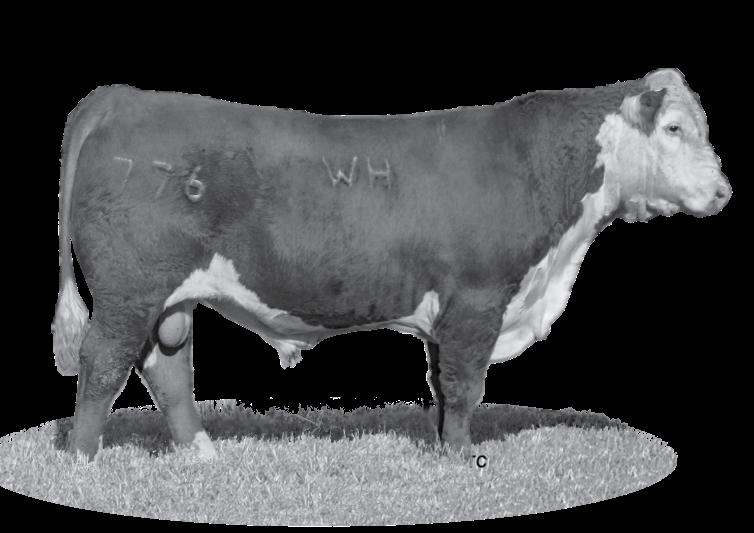
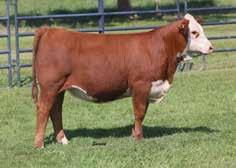

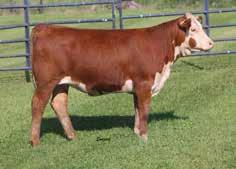
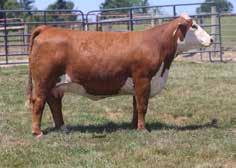



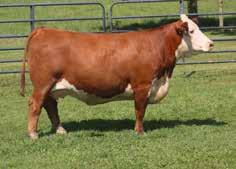
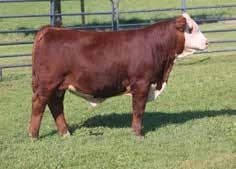
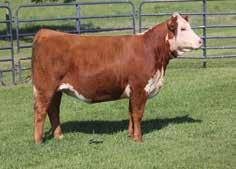
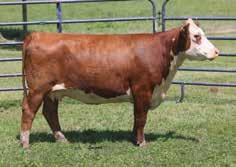


By Garth Ruff, Beef Cattle Field Specialist, OSU Extension
For the second time since I joined OSU Extension, we are dealing with shortages of forage and livestock feed. The first time was in 2019 when planting was drastically delayed or didn’t happen at all due to one of the wettest springs across much of northern Ohio. This year much of southern Ohio is dealing with the most severe drought since the inception of the U.S Drought Monitor and likely the driest conditions in a couple of generations.
Recently, Extension has been fielding several questions on how to best navigate dry conditions. While there are a handful of management strategies that can be used, the number one recommendation is to 1) be flexible and 2) consider the cost/ returns of supplementing feed and hauling water.
With the severe D3 drought across portions of 22 counties, as of writing the pasture conditions across the area are mostly poor. And nearly 40% of pasture in the state has the lowest pasture quality rating.
Second cutting hay crop was also short; at home it was roughly 20% of a normal hay year.
Considering that hay will be in high demand, and we are past corn silage harvest, one option to supplement cows going in fall and winter is to limit feed corn. Nearly 30 years ago at the Coshocton research farm, Dr. Steve Loerch was able to demonstrate that corn limit fed to cows was a viable option to maintain body condition scores, body weight, and reduce supplemental hay costs. Considering that corn futures are bearish, corn as an energy source looks to be favorable compared to current hay prices.
We have articles and resources on addressing feed and forage shortages online at beef.osu.edu.
As mentioned earlier, flexibility is going to be a key part to managing through this current drought situation. Without pasture to graze, having long weaned calves might not be an option as we get later into the fall.
Many cattlemen have a planned selling date for their cattle. Those dates should be adjusted based on feed availability and cost to make up the difference. This is especially true for those stockering calves and working off of smaller margins, as feeder cattle prices have softened a little in the past few weeks.

Continue to work through a plan. If you are in a drought affected area, this is a prime time to evaluate cow performance. If culling is part of a plan, start with older animals and those cows that weaned the lightest calves. Light calves may be the result of the cows milking ability or a later calving date, either way those cows should be towards the top of a potential cull list.
One final thing to consider in the long term is how do we make farms more drought resilient. Working with local Soil and Water Districts and NRCS to evaluate water management practices are worth future consideration.
Drought can be stressful. Haying cattle and hauling water in September are not chores anyone ever wants to tackle. If there are questions about feeding cattle, livestock management, or anything at all, don’t hesitate to pick up the phone and give myself or your local OSU Extension educator a call.
The Ohio Cattlemen’s Association and the Ohio Beef Council will be welcoming four interns for the Spring 2025 semester, beginning in Jan. and continuing through the latter part of April depending on the position.
Internships available are:
- Public Relations Intern
- Member Services Intern
- Youth Activities Intern
- Beef Improvement Intern
Each internship will require approximately 20 hours per week and is flexible based upon academic course schedules.
Interns will receive a scholarship based on availability during the duration of the internship.
Interested applicants should forward a cover letter and resume to the Ohio Cattlemen’s Association, Attn: Internship, 10600 U.S. Highway 42, Marysville, Ohio 43040 or by email to cattle@ohiocattle.org
Call 614-873-6736 or visit ohiocattle.org for more information.



By Christine Gelley, Agriculture and Natural Resources Educator, Noble County, OSU Extension
The Ohio State University’s State Climatologist, Aaron Wilson, has told me before - “The best way to end a drought is to talk about drought.”
I am hoping he is right. Maybe by the time this article is published we will have had some substantial rainfall. But as I write today, my area of Ohio continues to suffer from the impacts of the summer drought. It is difficult to find inspiration for hope when the factors that cause this struggle feel beyond our control. However, the optimist in me is always looking for the bright side of any situation.
Beef Cattle Field Specialist, Garth Ruff, recently offered some inspirational points of view in an article looking back on a road trip through Texas that can remind us how blessed we are in Ohio to have ample rainfall in our normal growing seasons. Many cattle operations there create their annual management plans relying on half the rainfall we receive in a normal Ohio year. While they may be more conditioned to droughty conditions, how to stock cattle on dry ground, and how to offer supplemental feed to make up the difference, it is not out of reach for Ohioans to borrow tips from cattle producers in more arid climates to help cope with our abnormal year.
You can read more about tips for managing the herd during drought on the OSU Beef Team webpage: https://beef. osu.edu.
When I look around for inspiration, I look at what plants are still green and growing. At this point, there isn’t much to speak of in the category of “desirable forage”. But there is green growth out there and that growth is from weeds. Some of the most prevalent plants that I see continuing to grow through these harsh conditions are Chicory, Queen Anne’s Lace, Joe Pye Weed, Ironweed, and Goldenrod.
What is special about these plants that they are thriving, while our other grasses and legumes are dormant?
These plants are adapted for survival in harsh conditions.
Chicory and Queen Anne’s Lace have taproots that allow them to reach deeper into the soil to access water and nutrients and that taproot serves as a structure to pack them away and draw from later. Joe Pye Weed, Ironweed, and Goldenrod are all perennial weeds in the aster family that have strong extensive root systems. These extensive root systems aid in providing access to water and nutrients while providing the storage to draw from during times of stress. We are in a distinct time of stress. Even these drought tolerant plants are wilting in the extreme heat, with little moisture left to draw from the root system.
One stress factor that is reduced for these weeds is livestock grazing. While deer do browse them, sheep and goats may as well, cattle prefer other options. Our desirable cool-season grasses and legumes have been chronically stressed for months and most have been grazed to the ground. What little leaf tissue that remains is brown and brittle. It will take rain, time, and rest for them to recuperate and be productive again.
Even those forages with expansive root systems will struggle to recover from summer grazing without relief from drought. Earlier in the summer it seemed that warm-season perennial grasses may have benefited from the hot and dry conditions. With the ability to reach deep in the soil profile and a different pathway of photosynthesis, those warmseason perennials can withstand drought stress longer than cool-season forages. The intense conditions suppressed competition from other plants in the ecosystem. But the extended period of time with no rainfall has made regrowth after grazing or haymaking very slow.

By the end of September, their season of active growth will come to an end. Without rain, they may not be able to be used again in 2024.
It wasn’t until a sprinkle of rain hit our area in early August that we even saw the Foxtails, Crabgrass, Barnyard grass, and Goosegrass germinate. Normally those grasses are prevalent by mid-July. But without moisture for the seed to germinate, the seed laid in wait on an empty spot of exposed soil waiting for a drink. At this point, those annual weeds may be the only green grass left for cattle to eat.
The lesson I am choosing to see from the profile of what plants are green and growing is that the secret formula to drought tolerance and resiliency is to:
1. Choose a diverse offering of forages that include annuals, perennials, coolseasons, and warm-seasons, grasses, legumes, and forbs.
2. Be sure to include plants that have the ability to store away resources for a time of need.
3. Allow forages the space and time to rest between grazing events and designate areas that can be used as sacrifice feeding areas when grazing opportunities become limited.
Nothing lasts forever. This drought won’t either. We can make it through and we will experience better seasons ahead.
Producers who have been impacted by intense drought in 2024 are encouraged to visit the Farm Service Agency website at https://www.farmers.gov/protectionrecovery/disaster-tool to explore what relief options may be available and how to apply for them. Also visit our OSU drought response website at: https:// kx.osu.edu/page/early-drought-response for helpful tools from OSU Extension.








To assist BEST families and help control the costs associated with exhibiting livestock, the BEST Committee will hold expenses steady for the upcoming season. This means there will be no increases in OCA membership, BEST nomination fees, Buckeye Breeders Series (BBS) nominations, as well as no increases passed on to sanctioned shows. Additionally, the number of rings that count for animals and showmanship in the final points will be less than the total rings possible, so busy families who miss a show will not have their final number of show points negatively impacted.
The first sanctioned show, the Mardi Gras Masquerade will have two animal show rings. Also planned for the first show will be two showmanship rings, both featuring enhanced awards. One ring will be for BEST participants only. The total number of animal rings for the 2024-2025 season will be 17.
More information on the total number of rings that will count in the final points total for animal placings and showmanship is available in the BEST rules at ohiocattle.org/ BEST.

Last year’s 25th anniversary of the program provided the opportunity for the BEST Committee to survey participant families.
One of the common responses received was the request to hold a show in northern Ohio. As a result, the 2024-2025 show schedule has added a weekend with a new show hosted by Defiance, Fulton, Henry, Williams and Wood Counties at the Fulton County Fairgrounds in Wauseon, Ohio.

Veterinarians will be performing the BVD PI tests and submitting them following each show to the laboratory at the Ohio Department of Agriculture. Test results will be returned to the veterinarian and OCA will assist in forwarding them to each individual exhibitor. There will be a $30 per head charge that will cover the BVD test, lab submission and 840 EID tag. All animals being tested, registered and crossbred, will receive an EID tag at testing, unless the animal already has a scannable EID tag.



Additionally, OCA staff and volunteers will be checking registration papers, verifying tattoos, scanning EID tags, and verifying memberships to expedite the check-in process at the first BEST show.
The OCA BEST committee has partnered with the following shows and county associations to provide some pre-season testing options to reduce the fees associated with an on-farm BVD test and to expedite the check-in process at the first BEST show.

Black Swap Preview Oct. 19 | 7 - 9 a.m. | Wood County Fairgrounds
Croton Nationals Oct. 26 | 7 - 9 a.m. | Hartford Independent Fairgrounds
Mardi Gras Masqueare Nov. 22| 4 - 8 p.m. | Pickaway County Fairgrounds


Story by Amy Beth Graves
Last March, a tornado tore through Darke County with winds up to 110 mph leaving behind a path of destruction. Structures were flattened and debris strewn all over the western Ohio county. When property owners started filing insurance claims, some made the unpleasant discovery that not all of their fencing was covered because it wasn’t listed correctly on insurance forms.
Recognizing that this was an important topic, the Darke County Cattlemen’s Association quickly decided that one of its educational sessions later in the year would focus on how people can check to make sure their property is properly covered by insurance.
“It’s upsetting to have a tornado take out your fencing, especially when you file a claim and discover it’s not covered. We’re always looking for ways to provide value to our members and this should be a good session,” said Erin Horst, president of the Darke County Cattlemen’s Association.
Keeping a pulse on the hot topics in the community has been a goal of the county association. Over the past few years, the group has worked hard to provide quality programming for members and find innovative ways to promote agriculture. Darke County Cattlemen’s efforts resulted in it receiving the Ohio Cattlemen’s Outstanding County award.

“We’re trying to promote the beef industry from smaller seedstock farms to larger feedlots and have primarily focused our efforts here in the county,” Erin said. “The counties are the heartbeat behind the cattlemen’s association.”
Erin, who grew up showing cattle in the rolling hills of southeastern Ohio, joined the Darke County Cattlemen’s board in 2020 and has watched the group’s membership triple since then.
“It’s been fun seeing our membership grow,” she said. “Members are seeing a benefit and willing to pay their dues again,” she said. “We have a really good board, and they like to get things done and have our programs succeed. They work really hard at this.”
Agreeing with her was board member Jake Breymier who grew up showing cattle in the county and took advantage of the OCA programs offered to local youth.
“Every person on that board is passionate about the beef industry and teaching our youth. We do a lot of hands-on programs with youth members to make them more knowledgeable about the cattle industry,” he said.
When it comes to determining what programs to create and support, the eight-member board focuses on educating beef industry youth and long-time producers as well as consumers. The Darke County Cattlemen’s has sponsored
and hosted hoof trimming clinics, Beef Quality Assurance sessions and self-driving tours of beef farms around the county so producers can learn more about herd health, AI synchronization, feedlots and pasture management.
“We decided to start having beef tours because we were looking to get more people involved, and it’s a good way to get other ideas and hear first-hand from producers,” said Erin, whose Horst Simmentals farms was a host on this year’s beef tour along with JB Cattle Co. and Perez Show Cattle. COBA/ Select Sires provided reproductive tracts for a hands-on experience, and Ohio State Assistant Professor Alvaro Garcia-Guerra discussed calving difficulties and had a calving simulator for participants to try at the last stop on the tour where a dinner was also held.
The county cattlemen’s has sponsored Beef Quality Assurance training, which has benefited not only producers but youth because it satisfies the quality assurance training requirements for Darke County Junior Fair participants.
Having a strong presence at the Darke County Fair continues to be a primary focus for the county cattlemen. About 20 years ago, the county helped start the fair’s Bred & Born Breeding Show and this year had a total of 40 market animals. The top five winners will
be recognized at Darke County Cattlemen’s annual banquet in March. Featured speaker will be Rodney Creech, member of the Ohio House of Representatives and a former chair of the Ohio House Agriculture Committee.
“During the fair is when we do a lot of youth promoting. We’ve given feed buckets to everyone who is a 4-H member as well as T Shirts for this year. We want to get the youth involved and give back to them as much as we can to keep them wanting to show,” said Megan Cover, secretary of the Darke County Cattlemen’s Association.
Several years ago, the cattlemen’s association started the popular Steak and Chop Tent at the fair with proceeds now benefiting the various organizations that help run it, including the local cattlemen’s group.
On the consumer side, the Darke County Cattlemen’s has created some innovative marketing and educational programming. For a
couple of years the group had a billboard up along U.S. Route 127 near Eldora Speedway to help promote the beef industry. Route 127 is known for its “127 Yard Sale,” which spans 690 miles from Michigan to Alabama in August. The first year’s billboard featured a cow in the pasture showing where real beef comes from in comparison to the other image – a laboratory where “synthetic” beef is created. The second billboard thanked consumers for supporting local beef producers.
The group’s Facebook page houses a Google map where consumers can find freezer meat to purchase from cattlemen’s members in the county. Last year the group had children’s book author Amanda Radke speak at its banquet, and the board purchased nine sets of her books with the Beef Queen and Beef Princess reading the story to elementary school students.
“They talked about different beef products and how it’s much more than the moo,” Erin said.
Jake, who has been on the board for about four years, said he’s proud of the work he and others have put in to help promote the beef industry and Darke County, one of Ohio’s largest ag producing counties.
“Our membership numbers have tripled and I attribute that to a really awesome board that is passionate about agriculture. They’ve worked really hard to involve the youth and help make people in the industry more knowledgeable. I’m proud to be part of this.”
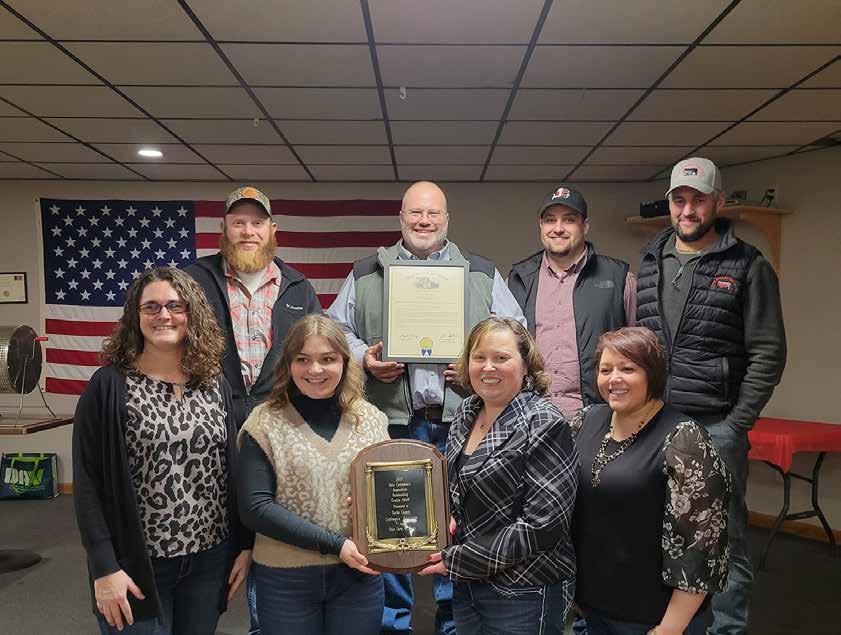

Since 2013, the U.S. Department of Agriculture’s Animal and Plant Health Inspection Service (APHIS) has required certain classes of cattle to carry some method of official animal identification before moving across state lines. That rule applied to sexually intact cattle 18 months and older, all dairy cattle, and all cattle going to show, rodeo, or exhibition. Under the 2013 regulations, APHIS allowed metal eartags (visually readable), EID tags (electronically readable), brands, tattoos, and Group/Lot ID numbers to count as official forms of animal identification.
In April 2024, APHIS issued a final rule that updates the 2013 regulations in one key way: requiring that eartags being used as official animal identification, going forward, be both visually AND electronically readable. In other words, changing the acceptable type of eartags for this purpose from metal tags to EID tags. APHIS did not change or expand the classes of cattle this applies to, the circumstances where official ID is needed, or anything having to do with the validity of brands and tattoos. The updated animal disease traceability rule takes effect on November 5, 2024.
Both the old 2013 regulations and the updated 2024 regulations only apply to interstate movement, across state lines. If the animals are not crossing state lines, this rule does not apply. Additionally, APHIS hasn’t changed the classes of cattle that this rule applies to: sexually intact cattle at or over the age of 18 months; all female dairy cattle of any age; male dairy cattle born after March 11, 2013; and all cattle used for rodeo, recreational events, showing, or exhibitions. Feeder cattle were excluded from these requirements under the 2013 rule, and they are still excluded under the 2024 rule.
The 2024 rule does NOT apply to beef cattle under 18 months of age.
The 2024 rule does NOT apply to cattle who are not leaving the state (moving intrastate only). At the same time, the updated rule also does not change or cancel any existing requirements for disease monitoring. For example, if you are in Washington state and are required to have an 840 tag as proof of Bangs vaccination, that state requirement still stands.
The 2024 rule does NOT apply to “commuter herds,” cattle who are moving across state lines from pasture to pasture based on a movement permit agreed to by the livestock owner and the state or tribal animal health official. In those cases, brands and tattoos accompanied by the appropriate certificate and shipper-receiver agreement will continue to suffice as official animal identification, per the existing regulations.
If you use eartags as your form of official animal identification for interstate movement, those eartags must be both visually and electronically readable. The rule takes effect on November 5, 2024, so as of that date, any tags going into ears in the fall and next spring must comply with the new rule. However, any metal tags applied as official ID prior to November 5 will be grandfathered in. Those metal tags will be accepted for the duration of the life of the animal – if the tag went in before November 5, you are good. No need to retag that animal.
Currently, the only EID technology approved for this purpose by APHIS is an 840 tag. 900 series tags do not fulfill the requirements of this rule, because they are not approved as an official means of identification by APHIS. APHIS may approve more types of tags in the future.
WHAT ABOUT CATTLE MOVING DIRECT TO SLAUGHTER?
The 2024 rule does NOT apply to cattle of any age who are moving interstate to go directly to slaughter. That said, cattle are only allowed to leave slaughter plants with a permit (ex. A VS Form 1-27) completed by officials or FSIS public health veterinarians at the plant. If the animals crossed a state line on the exception granted for slaughter only, and then leave that plant, then they need to meet all requirements (identification, documentation, etc.) of the state of entry prior to leaving. The goal here on APHIS’s part is to keep animals who have already reached the end of the process to stay within the pipeline for slaughter; not be resold to a buyer at another point in the supply chain, and thus potentially becoming untraceable animals.
Under the 2013 rule, cattle were allowed to move interstate without an official means of identification if they were moving directly to an approved livestock market and then slaughter, or directly to slaughter. The old regulations also specified that cattle must be identified using official means if they are held for more than 3 days at the plant. (There were no specific requirements for the unlikely scenario where cattle might be held for 3 or fewer days at one plant and then moved to a different slaughter location.)
HOW DO PRODUCERS GET TAGS? IS COST-SHARE AVAILABLE?
Each year since 2020, APHIS has distributed free electronic animal ID tags through state veterinarians. Each state can request some or all of their maximum allotted number of EID tags; the maximum for each state is calculated by a formula based on the 2022 agricultural census completed by the National Agricultural Statistics Service. APHIS currently acts as a middleman between states and the tag manufacturers. Once APHIS delivers the requested number of tags to the state veterinarian’s office, they defer to the state on how to proceed – it is up
to the state at that point, not APHIS, to make sure those tags reach producers at the grassroots level. To ensure that an adequate number of free tags would be available to cover the producers subject to the revised traceability rule, NCBA worked to secure $15 million in the Consolidated Appropriations Act of 2024 for EID tags and related infrastructure (i.e., readers). We are also working to secure an additional $15 million in the FY24 Agriculture-FDA appropriations bill, which is still in process. There is no direct cost-share or reimbursement model for EID tags at this time.
840 tags are only encoded with the 15-digit animal identification number (AIN). The tag itself does not record or transmit owner-specific information and no proprietary business information is stored in animal disease traceability databases. That said, the records kept by tag distributors contain more information, including the addresses of producers. EID tags do not measure, record, or transmit environmental information, such as emissions. They are also different from GPS devices; while they do log a data point when they are scanned (ex. when a tagged animal runs through a reader at a sale barn), they do not collect constant location data while cattle are grazing on the ranch.
Animal disease traceability information is housed in official federal and state databases. Those databases are NOT publicly available. They are only accessible to federal and state government officials who are responsible for dealing with high-impact animal diseases and who have passed extensive security screening and training to ensure data is handled correctly. NCBA is also working with allies in Congress on legislation that would strengthen and codify protections for producer information attached to tags (i.e. addresses) and prohibit tags from being used to collect any other data not directly related to animal disease traceability.
WHY IS TRACEABILITY AN INDUSTRY PRIORITY?
The federal government estimates that the United States will receive 77.7 million international visitors in
2024. The United States grants up to 675,000 permanent visas every year for legal immigration. In 2023, U.S. Customs and Border Protection recorded nearly 2.5 million “illegal alien apprehensions” at the U.S.-Mexico border. The sheer volume of people coming in and out of the country is staggering, not even counting the massive amount of global shipping, air traffic, and trade at our ports of entry. Every single one of these entrances to the country represent a new opportunity for foreign animal disease to enter the United States.
The threat of a foreign animal disease outbreak is severe, and it is growing. Highly contagious diseases like African swine fever and Foot and Mouth Disease (FMD) will trigger 72 hour stop-movement orders as soon as they’re detected in the United States. We would immediately lose access to our export markets. Many other diseases could trigger quarantines and movements restrictions if federal, state, or local officials think it’s necessary.
The massive disruption to the supply chain will have a significant impact on cattle producers’ bottom line; it’s estimated that an FMD outbreak could cause $221 billion in economic losses to the American cattle and beef industry. A fast, accurate, and national traceability system will be vital to treating an outbreak, preventing the spread of disease, and proving which herds are safe to move so producers can get back to business. An EID tag system can accomplish this task faster and more efficiently than a metal tag system.
In the United States, we have seen examples – most recently in 2023 – of animals with concerns like atypical BSE (i.e. mad cow) either having gaps in their traceability or having inefficient or duplicative recordkeeping that kept APHIS from completing an investigation quickly. The gaps in our current system’s metal tags and paper recordkeeping are a huge concern when APHIS is trying to quickly track down and investigate a food safety issue or animal disease outbreak. Unfortunately for them, the United Kingdom has provided us with a perfect test case of how traceability will function during an FMD outbreak. In 2001, before the implementation of
EID in the U.K., the country experienced an outbreak.
• The outbreak lasted for 8 months.
• 6 million animals were depopulated.
• 60 farmers lost their lives to suicide.
• The cattle industry lost $19 billion USD.
• It took 18 months to normalize their trade relations with other nations.
The U.K. has another FMD outbreak in 2007, after the implementation of EID.
• With EID, the outbreak lasted 4 months, down from 8.
• With EID, just over 2,100 animals were depopulated, down from 6 million.
• With EID, no farmers lost their lives to suicide during the outbreak, down from 60.
• With EID, the industry lost $200 million in USD, down from $19 billion.
• With EID, it took the U.K. 2 months to resume normal trade, down from 18 months.
HOW DID NCBA ENGAGE IN THIS REGULATORY PROCESS?
NCBA has consistently fought to keep this multi-year regulatory process focused on what cattle producers want and need out of an animal disease traceability system. There has always been core priorities that NCBA advocated for inclusion in any updated rulemaking on EID tags, whether that rule was voluntary or mandatory. We laid out these core priorities in our 2023 comments on the proposed rule, and throughout our talks with APHIS as they finalized the rule. These priorities were also codified in the policy that passed through our grassroots process at CattleCon in January 2024. Specifically, our priorities are that a nationally significant animal disease traceability system should:
• Protect data and maintain producers’ privacy.
• Utilize low-cost devices and offset the cost to producers with federal or state funds.
• Operate at the speed of commerce.
• Maintain existing state brand inspection activities.
• Be compatible with private sector animal ID programs backed by USDA.
• Keep separate any rulemaking for feeder cattle (under 18 months of age.)
*continued on p.32
The OCA Youth Council will engage Ohio’s youth with opportunities to explore and develop their passion for the beef cattle industry. The Council will involve youth of all ages and backgrounds representing every industry segment and every level of experience. Its participants will further the mission of OCA while growing leadership skills to enhance their education, build career pathways and influence their communities.
The OCA Youth Council will be launched at the OCA Annual Meeting, February 1, 2025, Hilton Polaris, Columbus, Ohio. It will introduce the first youth leaders for the Council at an event for beef industry youth and their parents. The program will feature speakers and the announcement of the Council’s initial contests and events.



Tatumn is from Chardon, Ohio in Geauga County and is the daughter of Rick and Kim Poff. She is 17 years old and has shown steers through 4-H for the past 10 years, while also being heavily involved in the OCA BEST Program. Tatumn is the secretary of her 4-H club and her county’s Junior Leader Club. Tatumn will be completing her senior year at Chardon High School as well as finishing her associate degree and sophomore year at Lakeland Community College. She plans to further her education at an undecided college to major in Agriculture Communications and Political Science. Tatumn is also involved in the Ohio Junior Shorthorn Association where she is the Public Relations Officer.
Cheyenne is from Minerva, Ohio in Stark County and is the 18 year old daughter of Marla Rohr. She has been in 4-H for 10 years, exhibiting hogs, cattle and goats and has competed in the OCA BEST Program and across various states. She is a recent graduate of R.G. Drage Career Center animal science program. Cheyenne was an active member of her FFA chapter serving as the president and competing in multiple CDEs. She was a part of many clubs and organizations in her high school career, such as National Honor Society, Stark County Farm Bureau, and Stark County Goat and Steer Committees.
Taylor is from Chardon, Ohio in Geauga County and is the daughter of Rick and Kim Poff. She is 17 years old and has a twin sister, Tatumn. She attends Chardon High School where she will be a senior and is also attending Lakeland Community College where she will be graduating with an associate degree in May. This is her ninth year showing steers in 4-H. Taylor is involved in the Ohio Maine and Chianina Association where she has been both their Princess and Queen. She serves as president of her 4-H club as well as president of her county’s Junior Leader Club.
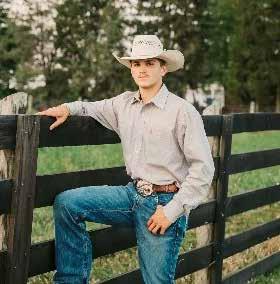



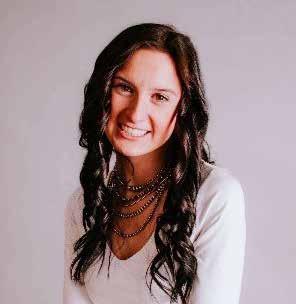
Noah is from Luckey, Ohio in Wood County and is the son of Jon and Melissa Lang. He is 18 years old and is in his senior year of high school at the Eastwood/Penta Career Center where he is studying Construction Electricity. Noah is an active member of Penta FFA and Simply Stock 4-H Club. He has been involved in 4-H for nine years showing market hogs, goats and beef projects. Noah is looking forward to another great year of BEST shows and helping launch the new OCA Youth Council.
Riley is from Pemberville, Ohio in Wood County and is the daughter of Kevin and Diane Burtchin. Riley is 17 years old and lives on her family’s farm where they raise feedlot cattle. Riley is a high school senior at Eastwood High School and plans to attend college to become a veterinarian after graduating. She is a member of the Eastwood FFA, Wood County Junior Fair Board, and Wood County Livestock Judging Team.
Madi is from Saint Paris, Ohio in Champaign County and is the daughter of Adam and Stephaine Dunham. She grew up exhibiting cattle and goats. Madi is a senior at Urbana High School. She has been active in 4-H and FFA since she was eligible. Madi has served in many officer and chairman positions, She also competed in numerous CDE/LDE’s, served on many species councils and boards, and served as a camp counselor for two years. She plans on attending Black Hawk East and a four-year university to continue her judging career as well as earn a degree in Animal Science that will allow her to work in the livestock nutrition field.
Brock is from Woodville, Ohio in Wood County and is the son of Susie and Paul Perry. He is currently a senior at Woodmore High School and the president of the Woodmore FFA. Brock has been a part of the OCA BEST program since he was 10 years old. This year he is looking forward to serving as a BEST junior representative. In the future, Brock hopes to use the skills he has learned from showing and raising market cattle to join a collegiate livestock judging team. Currently, he participates on the Wood County Livestock Judging team and has successfully competed at many state and national contests.
Alexis is from Woodville, Ohio in Wood County and is the daughter of Susie and Paul Perry. She is a senior at Woodmore High School. Her family raises beef cattle with a show barn full of steers, goats, and sheep. She has participated in the OCA BEST Program for eight years and loves being a part of OCA. Her passion for the industry shines bright as she is thrilled to be a BEST junior representative. After high school, Alexis plans to continue her education in nursing school and go on to be a Nurse Anesthetist.
Preparation is key to a great tailgating experience. The Ohio Beef Council (OBC) offers new recipe videos that take consumers from the kitchen to the grill. Recipes like Steak Flatbread and Mojo Kabobs can be prepped or assembled in the kitchen and travel to the grill for an easy and delicious meal.
Dr. Lyda Garcia, OSU Extension Meat Specialist, recently utilized the kettle grill to show how one budget-friendly chuck roast can be turned into Smoked Shredded Beef Sliders and Poor Mans Burnt Ends.
Follow @ohiobeef on Facebook, Instagram and TikTok for more recipes and grilling tips.

To give consumers a behindthe-scenes look at what chefs do, and cook (hint, it’s Beef), while they’re away from their restaurants, the Beef. It’s What’s For Dinner. brand, funded by the Beef Checkoff, partnered with Chef Mashama Bailey, and Owner/Chef Geoff Ellis to showcase this year’s Chef’s Night In. Chef Mashama Bailey of the Grey Restaurant Group, re-created a family recipe, Baked Sea Island Peas with Ground Beef with the help of her
father, and invited her mother, and good friends to enjoy an evening in, on her beautiful Austin rooftop Geoff Ellis of Mum Food’s wanted to showcase his skills outside of BBQ and delicatessen recipes. He made a crowd-favorite Vietnamese Shaking Beef for his girlfriend, mom, stepmom, and friends for a gathering celebrating all of his favorite women. In contrast to Mashama’s downtown Austin rooftop views, we get to see Geoff at home, outside of Austin, enjoying a delicious Beef meal in his backyard.

It’s September and even though it’s still summer-like weather, Ohioans love their comfort meals. Over Labor Day Weekend, OBC’s sponsored recipe post with Molly from whatmollymade.com quickly hit 1.4 million views and counting. Social media went crazy for a 30-minute Cowboy Soup featuring ground beef, potatoes and vegetables swimming in a rich broth. Find this recipe and more from our partnering influencers at ohiobeef.org.


OBC in partnership with the Ohio State University (OSU) helped show consumers that beef is key in providing the nutrients our bodies need but at the end of the day, beef’s rich flavor makes celebrating a win that much better.
Joy Dunne, OSU Women’s Ice Hockey Forward, is no stranger to a big win. As a sophomore, Joy scored the game-winning goal in the finals of the national championship that propelled Ohio State to their second national title in three years. With this year’s hockey season right around the corner, Joy is beefing up her game and collecting her victory meal recipes. Watch for and share Joy’s video on social media this fall.






The Ohio Cattlemen’s Association (OCA) Allied Industry Council is a business partnership that supports educational efforts and leadership opportunities for cattlemen to advance Ohio’s beef cattle industry.
Ag Credit
David White 419-435-7758 www.agcredit.net
Ag-Pro
Ben Butcher 740-653-6951 www.agprocompanies.com
Alligare, LLC
Marianna Hauge 334-748-0048
Bo Burns 919-605-8016
Jeff Clark 304-992-6195
Paul Conti 610-742-6303
Zach Hilditch 208-550-5869 www.alligare.com
Baird Private Wealth Management
Patrick Saunders 740-446-2000 www.patricksaundersfc.com
Bane-Welker Equipment
Makayla Eggleton 937-206-1653 www.bane-welker.com
Boehringer-Ingelheim
Brent Tolle 502-905-7831 www.boehringer-ingelheim.com
Burkmann Nutrition
Brent Williams 859-236-0400
Kasey Gordon 859-236-0400
Tom Hastings 859-236-0400
Austin Sexten 859-236-0400 Dr. David Williams 859-236-0400 www.burkmann.com
Cargill Animal Nutrition
Elaine Riechard 937-770-2820
Anna Taylor 701-220-9387 www.cargill.com | www.sunglo.com
Central Life Sciences
Kenley Rogers 330-465-9225 www.centrallifesciences.com
CLA-CliftonLarsonAllen LLP
Bill Scott 419-213-5265
Travis Reamsnyder www.claconnect.com
Cornerstone Veterinary Services, LLC
Amgad Riad 567-510-4340 www.mycsvets.com
Corteva AgriScience
Rachel Walker 270-995-9541 www.rangeandpasture.com
D&J Sales and Services
Jon Jones 740-391-1246 www.djsalesandservice.com
DHI Cooperative, Inc.
Brian Winters 1-800-DHI-COOP
Tim Pye 912-682-9798 www.dhicoop.com
Elanco Animal Health
Jon Sweeney 515-249-2926
Jim Stefanak 330-298-8113 www.elanco.com
Farm Credit Mid-America
Scott LaGuire 419-733-9796
David Sanders 740-335-3306
Evan Hahn 567-215-7367
www.e-farmcredit.com
Farm Science Review
Nick Zachrich 614-514-9577
Ali Friesen 614-292-4278 www.fsr.osu.edu
Four Star Veterinary Service
Taylor Engle 419-305-7494
Bryant Chapman 419-953-4523
Trey Gellert 419-953-4523 www.4starvets.com
Heartland Bank
Matthew Bucklew 614-475-7024 www.heartland.bank
Heartland Feed Services
Joe Siegrist 419-305-2451
Travis Spicer 419-733-9915
Chad Knapke 419-733-6434
Andrew Davis 419-733-6239
Jacob Giere 419-733-1611 www.heartlandfeedsrevices.com
Heritage Cooperative
Dale Stryffeler 330-556-8465
Derek Fauber 614-873-6736
David Monnin 914-873-6736 www.heritagecooperative.com
Highland Livestock Supply Ltd.
Curt & Allison Hively 330-457-2033 www.highlandlivestocksupply.com
Hubbard Feeds
Jordan Gilbert 937-670-4231 www.hubbardfeeds.com
ICAP Crop Insurance
Joanie Grimes 937-763-1198
Lindsey Hall 937-763-8115 www.icapcrop.com
Jividens’s Farm Equipment, LLC
Dustin Deckard, Ashlee Deckard, Jon Davis, & Jane Jividen 740-709-9713
https://jividens.com
Johnson Concrete Livestock Waterers
Brad McCormick 402-463-1359 www.johnsonconcreteproducts.com
Kalmbach Feeds
Jeff Neal 419-356-0128
Kyle Nickles 419-294-3838
Cheryl Miller 419-294-3838 www.kalmbachfeeds.com
Kent Nutrition Group
Patrick Barker 513-315-3833 www.kentfeeds.com
M.H. Eby Inc./Eby Trailers
Kirk Swensen 614-879-6901
Steve Rittenhouse 614-879-6901
J.R. Kaverman 740-956-0623 www.mheby.com
McArthur Lumber & Post
Stan Nichols 740-596-2551 www.totalfarmandfence.com
McGuire Wholesale
Virgil Jennings 800-860-3744
Dave Bishop 800-860-3744
Keith Montgomery 800-860-3744
Duane Wilson 800-860-3744
Tessa Briggs 800-860-3744 www.mcguirewholesale.com
Merck Animal Health
Seth Clark 330-465-2728
Dave McElhaney 724-494-6199 www.merck-animal-health-usa.com
Muirfield Energy
Doug Foreman 419-569-5912
Cathi Lydy 419-265-0758
Michael Gonzales 817-739-2623 www.murifieldenergry.com
Murphy Tractor
Eric Bischoff 614-876-1141
Brent Chauvin 937-898-4198 www.murphytractor.com
Nationwide Insurance
Shawnda Vega 614-329-4500 www.farmagentfinder.com
Neogen
Calvin Bontekoe 810-730-6131 www.neogen.com
Nexus Marketing
Holly Fleck 419-953-2295
Pat Lampert 419-953-0546
Chad Leffel 567-204-7846 www.nexusmarketing.com
Ohio Ag Equipment/ Ohio CAT
Linda Meier 614-851-3629
Brian Speelman 614-851-3629 www.ohiocat.com
Ohio Angus Association
Jacy Bapst 740-648-6531 www.ohioangus.org
Ohio Penal Industry
William Bierbaugh 614-214-8916, Robert Caplinger 614-531-8291 www.opi.ohio.gov
OSU Large Animal Services
Eric Gordon 937-642-2936
Kevin Jacque 937-642-2936
Shaw Perrin 937-642-2936
Kristin Smith 937-642-2936
Alissa Wilhelm 937-642-2936 www.vmc.vet.osu.edu
PBS Animal Health
Hanna Green 330-834-3000
Kevin Warrene 800-321-0235 www.pbsanimalhealth.com
Priefert Ranch Equipment
Steve Campbell 903-434-8973 Nate Aguredakes 330-868-1181 www.priefert.com
Purina Animal Nutrition Cy Prettyman 470-360-5538 Kira Morgan 812-480-2715
Doug Phillips Kylie Ewing Crisler www.purinamills.com
Quality Liquid Feeds Joe Foster 614-560-5228 www.qlf.com
Reed & Baur Insurance Agency
Jim & Paula Rogers 866-593-6688 www.reedbaurinsurance.com
Richfield Industries Tom Campbell 810-516-7779 www.richind.com
Rodoc Leasing & Sales
Roger Miller 419-692-5881
Braytan Kruse 419-394-4408 Tony Rieman 419-348-0644
Abby Snyder 937-869-9712
Bryan Hoersten 937-503-7979 www.rodoc.com
Sakura Wagyu Farms
Tori Grafton 614-809-1089
Chad Adams 402-533-2030
Lawrence Adams 402-440-0924
Francis Pang 330-323-0960
David Sahr 740-817-3261 www.sakurawagyufarms.com
Saltwell Western Store
Sally Puzacke 330-343-0388 www.saltwellwesternstore.com
Sedgwick
Tony Sharrock 614-376-5450
David Deyo 614-376-5401
www.sedgwickcms.com
Select Sires Member
Cooperative
Rachael Billups 937-527-5230
Joanna Frankenberg 614-8785333
Kevin Hinds 614-878-5333
Jim Ray 614-205-7176
Julie Ziegler 614-878-5333 www.cobaselect.com
ST Genetics
Aaron Arnett 614-947-9931 www.stgen.com
Straight A’s
Nikki McCarty 330-868-1182
Nate Aguredakes 330-868-1182
www.ranchcity.com
The Wendt Group
Kevin Wendt 614-626-7653
Dale Evans 260-894-0458
Nick Cummings 740-572-0756
Tyler Wilt 740-572-1249
Wesley Black 740-572-1670
W.J. Fannin 614-395-9802
www.thewendtgroup.com
TransOva Genetics
Emily Warnimont 712-722-3586
Lacey Murray 712-722-3586
Amber Clark 712-722-3586
Sabrina Clark 712-722-3586 www.transova.com
Umbarger Show Feeds
Jackson Umbarger 317-422-5195
Eric King 419-889-744 www.umbargerandsons.com
United Producers, Inc.
Jake Osborn
Sam Roberts 614-890-6666
Hannah Carter 614-433-2190 1-800-456-3276 www.uproducers.com
Vytelle
Zach Bartenslager 304-661-6331
Kara Schmidt 443-974-2067
Rodney Schoenbine 330-4649793 www.vytelle.com
Weaver Leather Livestock
Angela Kain 330-674-1782
Lisa Shearer 330-674-1782 www.weaverleather.com

WM. E Fagaly & Son Inc.
Ryan Gries 513-678-1042
Chris McConnell 513-667-7444
www.fagalyfeed.com
Zoetis Animal Health
Laura Homan 320-293-2184 www.zoetisus.com
Clifton Lawson Allen




The Ohio Cattlemen’s Foundation (OCF) held the annual Cattlemen’s Gala Celebration and Fundraiser on Saturday, Aug. 24 at the Delaware County Fairgrounds, Delaware, Ohio. The event supports the OCF youth scholarship fund, benefiting the next generation of beef industry leaders. Attendees gathered in their boots and hats for dinner, drinks, and dancing while enjoying live music from acoustic duo Dalton & Delaney, a local Midwest, Ohio duo with beef and agriculture industry roots. OCF President, Tom Karr of Meigs County and OCF past president Aaron Arnett of Richland County served as event emcees. Cathann Kress, vice president

of agricultural administration and dean of The Ohio State University College of Food, Agricultural & Environmental Sciences shared an update from the college.
Gala attendees, event sponsors, and silent and live auction donors and buyers were all generous contributors to the Gala’s successful mission to support youth scholarships and youth education programs.
During the event, the Foundation announced the creation of new scholarships from Gala proceeds. Two $2,500 scholarships will be awarded to Ohio residents who are members of the Ohio State University junior and senior General Livestock


Judging teams. One scholarship will be awarded for the OSU Columbus campus team and one for the OSU ATI Wooster campus team. Preference will be for applicants who demonstrate interest in the beef industry and are involved in the Ohio Cattlemen’s Association.
“The cattlemen’s foundation is fortunate to have so many great supporters who help make the Gala a success year after year,” said Tom Karr, OCF president, Pomeroy, Ohio. “This event helps the foundation to assist the future leaders of our industry as they further their education and careers.”
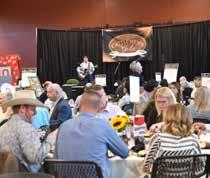
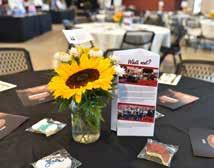


VENUE SPONSOR
Open Road Renewables
BEEF SPONSOR
Certified Angus Beef
E.R. Boliantz Packing Co.
Blue Ribbon Meats, Inc.
COW PLANTER FLORALS
Miller’s Country Gardens, Delaware, Ohio
FLORAL & DECOR SPONSOR
Ohio Simmental Association
TABLE CENTERPIECES
The Flower Barn, Crestline, Ohio
SELECT SPONSOR
Ohio Valley Limousin Association
OSU College of Veterinary Medicine
DESSERT SPONSORS
Kim Davis Insurance Agency
PBS Animal Health
Kent Nutrition Group
HORS D’OEURVES SPONSOR
Reed & Baur Insurance
PHOTO BACKDROP SPONSOR
PBS Animal Health
PROGRAM SPONSOR
Select Sires
PRINTING SPONSOR
Post Printing
TABLES
OSU College of Food Agricultural, and Environmental Sciences
Voge Farms; Ohio CattleWomen
United Producers, Inc.
Tim & Elizabeth Harsh
E.R. Boliantz Co.
R & C Packing & Dale Taylor Farms
Karr Red Angus & Reed & Baur Insurance
Converse Charolais Farms
Converse Shorthorns
The Berry Farm & Williams Family Farm
Center Street Meat Company
Wood County Beef Producers
Andrew Armstrong
Greg Arnett
Matthew Bucklew
Mike Bumgarner
Janet Converse
Rodney Creech
Michael Cress
Rita Dailey
Dan Dickson
Keith DiDonato
David Felumlee
Lyda Garcia
Mark Goecke
Joanie Grimes
Zane Gross
Kelly Guthrie
Jeff Harr
Tim Harsh
Rachel Heimerl
Allen Homan
Dee Jepsen
John King
Richard Kinney
Kerri Koschnick
Cathann Kress
Matt Lust
Jaymes Maciejewski
Sandra Mazey
Tom Mitevski
Open Road Renewables
Jake Osborn
Mike Pfaff
Jim Rogers
Dustin Sautter
Schroeder Angus
Nancy Sexten
Guil Signorini
Stan Smith
Erin Stickel
Susie Turner
Barb Watts
Justin Williams
Paelyn Wilson
Emily Zollinger
AgCredit
Andy Lohr
Austin Cole
Boviteq
Buckeye Hereford Association
Claylick Run Farms
Drew & Emily Zollinger
Ferguson Cattle Company
Frank Phelps
Jaymes Maciejewski
Kirsten Nickles
Kurtz Boots
Maplecrest Farms
Mark Gaerke
Mark Goecke
Marlene Reid
Ohio Angus Association
Ohio CattleWomen
Ohio Federation of Soil and Water Conservation Districts
Ohio Shorthorn Association
Rod’s Western Palace
Shane Riley
ST Genetics
TD Angus
TransOva Genetics
Tyler Humphrey
Vytelle
Weaver Leather

The OCA Annual Meeting & Awards Banquet will be held on a new date Saturday, Feb. 1 at the Hilton Polaris in Columbus, Ohio.
Beef industry youth and their parents are invited to join the association’s youth leaders on Saturday morning for the roll-out of the new OCA Youth Council. These youth council leaders will debut new programs and opportunities that will be available for young people from all beef backgrounds and experiences. Planning is underway, so check OCA’s website for more details as they become available.
Plan to attend lunch with fellow cattlemen and then join OCA for an afternoon of business and policy discussion to decide the association’s top priorities for the year.
The Ohio Cattlemen’s Foundation will host its annual meeting that will include the presentation of 2024 scholarship recipients, including the new Bill Tom Memorial awards.
The evening awards banquet will include the celebration of seven distinguished award winners for the year in the categories of Young Cattleman of the Year, Industry Service Award, Industry Excellence Award, Seedstock Producer of the Year, Commercial Producer of the Year, Environmental Stewardship Award and the Outstanding County Award.
The night will end with a social event and live auction to raise funds for OCA’s Political Action Committee (PAC) that supports ag friendly candidates. Schedule and details are available at www.ohiocattle.org.


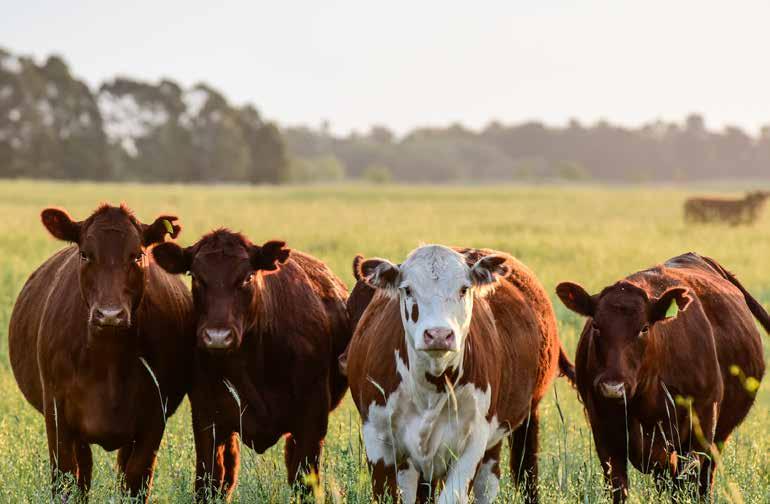



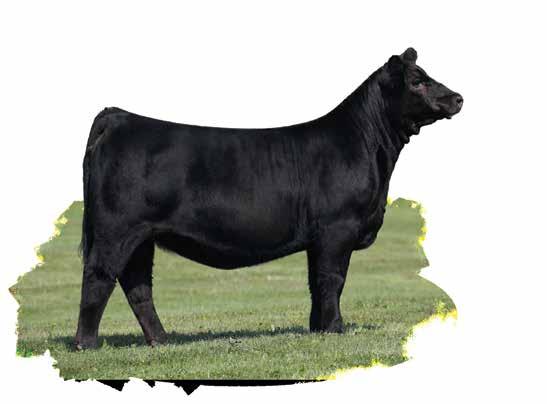



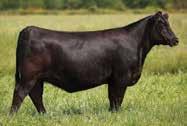
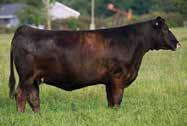
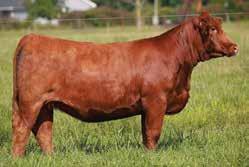

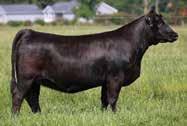




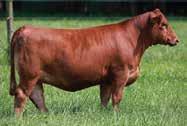
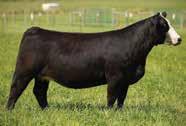















By David Marrison, OSU Extension Field Specialist - Farm Management and Aaron Wilson, OSU Extension Ag Weather and Climate Field Specialist
Drought conditions started in Ohio back in mid-June and have intensified all summer. According to the U.S. Drought Monitor report on August 27, 2024, D4-exceptional drought was introduced to Ohio (Meigs and Athens Counties) for the first time since the U.S. Drought Monitor’s inception in 2000. On September 5, D4 increased to 7.35% of the state, while other categories of drought (D1D3) significantly expanded (Figure 1). It is important to remember that D4 conditions only occur once every 50 to 100 years.
Despite much needed rainfall occurring last week from Meigs and Athens Counties to Belmont County, it was not enough to overcome the drought conditions made worse by scorching heat with many days with high temperatures in the mid to upper 90s. Farther north, very little rain fell in August or during the summer. At the Zanesville Municipal Airport for example, only 0.17” of rain fell in August and 4.95” fell in June-August. This marks the driest August on record and second driest summer for this location for the period 19462024. Similar conditions are present for many counties across south central and east central Ohio.
Impacts are numerous and widespread including very poor pasture conditions, lack of hay growth, low ponds, dry creeks, water hauling, and failing crops. Even for counties in lower drought categories, drought stress is present with early changing leaves on trees and stress on native plants. With drought conditions expanding nearly statewide, there will be increased combine and field fire risk this harvest season as well.
The Secretary of the United States Department of Agriculture (USDA) issued two natural disaster designations (August 30 and September 3) which designated 23 counties as primary disaster counties with an additional 16 counties classified as contiguous. According to the U.S. Drought Monitor, these counties suffered from a drought
intensity value during the growing season of 1) D2 Drought-Severe for eight or more consecutive weeks or 2) D3 Drought-Extreme or D4 Drought-Exceptional. The following are the counties which have been designated as of September 3.
Primary counties eligible in Ohio: Athens, Belmont, Fairfield, Fayette, Gallia, Guernsey, Harrison, Highland, Hocking, Jackson, Jefferson, Madison, Meigs, Monroe, Morgan, Muskingum, Noble, Perry, Pickaway, Pike, Ross, Vinton and Washington Counties.

Assets/USDA-FSA-Public/usdafiles/ FactSheets/2019/emergency-loanprogram.pdf
Contiguous counties also eligible in Ohio: Adams, Brown, Carroll, Champaign, Clark, Clinton, Columbiana, Coshocton, Franklin, Greene, Lawrence, Licking, Scioto, Tuscarawas, and Union Counties. These designations allow the USDA Farm Service Agency (FSA) to extend assistance to agricultural producers through a variety of programs. These programs are available to both new and existing users of FSA services. Please note that each program has eligibility requirements and payment limitations.
Below are short descriptions for each of the drought assistance programs:
Emergency Loan Program: This program provides emergency loan assistance to farm operators. These loans can be used to meet various recovery needs including the replacement of essential items such as equipment or livestock, reorganization of a farming operation, or to refinance certain debts. For production losses, a 30% reduction is required to be eligible. Losses to quality may also be eligible for assistance. Producers can borrow up to 100 percent of actual production or physical losses to a maximum amount of $500,000. The deadline for producers in designated primary and contiguous counties to apply for loans is between April 21 -28, 2025 depending on the county. Complete details about ELP can be found at: https://www.fsa.usda.gov/
Disaster Set-Aside Program (DSA): This program allows FSA borrowers to set aside of one payment due to qualified disaster. Each payment set-aside must be repaid prior to the final maturity of the note. Any principal set-aside will continue to accrue interest until it is repaid. The borrower must be current or not more than 90 days past due on any FSA loan when the application is completed. Borrowers have 8 months from date of the disaster designation to apply. More details about the DSA program can be found at: https://www.fsa.usda.gov/ Assets/USDA-FSA-Public/usdafiles/ FactSheets/2019/disaster-set-asideprogram-factsheet-19.pdf
Noninsured Disaster Assistance Program (NAP): This program provides financial assistance to producers of non-insurable crops that have lower yields or crop losses due to natural disasters such as drought. Eligible crops must be commercially produced agricultural commodities for which crop insurance is not available. Such crops include (but are not limited to): crops grown for food; crops planted and grown for livestock consumption, such as grain and forage crops; specialty crops, such as honey and maple sap; value loss crops, such as aquaculture, Christmas trees, and ornamental nursery and turf-grass sod. Eligible producers must have purchased NAP coverage for the current crop year. NAP payments are limited to $125,000 per
crop year, per individual or entity for crops with basic coverage. Any NAP payments received with additional (buy-up) coverage is to $300,000. More information about NAP can be found at: https://www.fsa.usda.gov/ Assets/USDA-FSA-Public/usdafiles/ FactSheets/noninsured_crop_disaster_ assistance_program-nap-fact_sheet. pdf
Tree Assistance Program (TAP): This program provides financial assistance to qualifying orchardists and nursery tree growers to replant or rehabilitate eligible trees, bushes, and vines damaged by natural disasters such as drought. To be eligible, at least a 15 percent mortality loss, after normal mortality, must be determined due to a natural disaster. Payment is the lessor of either 65% of the actual cost of replanting or the maximum eligible amount established by FSA. Replacement of eligible trees, bushes and vines must be made within 12 months. More information about TAP can be found at: https://www.fsa. usda.gov/Assets/USDA-FSA-Public/ usdafiles/FactSheets/tree_assistance_ program-tap-fact_sheet.pdf
Conservation Reserve Program (CRP) Haying and Grazing: FSA permits emergency haying and grazing on certain CRP practices in a county designated as D2 or higher on the U.S. Drought Monitor, or in a county where there is at least a 40 percent loss in forage production. It should be noted that before haying and grazing, producers should contact their FSA office to determine if the county remains eligible and to obtain a modified conservation plan. After a county is approved for emergency haying and grazing, conditions are reviewed monthly to determine whether continuing the emergency activities is warranted. To date, 31 counties in Ohio are eligible. More information about the emergency grazing of CRP acreage can be found at: https://www.fsa. usda.gov/programs-and-services/ conservation-programs/conservationreserve-program/emergency-hayingand-grazing/index
Livestock Forage Disaster Program (LFP): This program provides compensation to eligible livestock producers who have suffered grazing losses due to drought on land that is native or improved pastureland with permanent vegetative cover or that is
reported on the FSA-578 with initial intended use of grazing. This program looks at acreage and intended use directly from the producer certified FSA-578 form. This program also provides compensation for eligible livestock. Eligible livestock must be animals that receive the majority of their net energy requirement of nutrition via grazing. Covered livestock include beef cattle, dairy cattle, deer, equine, goats, llamas, and sheep. The 2018 Farm Bill established a maximum annual per person and legal entity payment limitation for LFP of $125,000. More details about the LFP program can be found at: https://www.fsa.usda.gov/programsand-services/disaster-assistanceprogram/livestock-forage/index Livestock Indemnity Program (LIP): This program benefits to livestock owners or contract growers for livestock deaths in excess of normal mortality caused by adverse weather. Note that drought is not an eligible adverse weather event except when death loss is associated with anthrax which occurs because of the drought. In addition, Mycoplasma Bovis is an eligible loss during drought for bison. Payment levels are based on national payment rates that are 75% of the market value of applicable livestock. Cattle, poultry, swine and other livestock are covered. More information about LIP can be obtained at: https://www.fsa.usda.gov/ Assets/USDA-FSA-Public/usdafiles/ FactSheets/livestock_indemnity_ program_lip-fact_sheet.pdf
Emergency Assistance for Livestock, Honeybees, and Farm-Raised Fish (ELAP): This program provides emergency assistance to eligible producers of livestock, honeybees, and farm-raised fish for losses due to disease, or adverse weather not covered by the Livestock Forage Disaster Program and the Livestock Indemnity Program. Assistance is provided for losses resulting from the cost of transporting water to livestock and hauling livestock to forage or other grazing acres due to a qualifying drought. For commercial bee producers, ELAP provides for additional feed purchased to sustain honeybees during drought conditions when natural feed is not available. ELAP also assists farm-raised fish operations for excess mortality and excessive feed requirements due to
eligible weather conditions. Learn more about each facet of the ELAP program at:
• Livestock- https://www.fsa.usda. gov/Assets/USDA-FSA-Public/ usdafiles/FactSheets/elap-livestockfact-sheet.pdf
• Honeybees- https://www.fsa.usda. gov/Assets/USDA-FSA-Public/ usdafiles/FactSheets/2022/fsa_ elaphoneybeefact_sheet-22.pdf
• Farm-raised fish- https://www. fsa.usda.gov/Assets/USDA-FSAPublic/usdafiles/FactSheets/2022/ elap_farmraisedfish_factsheet-2022final.pdf
Emergency Conservation Program (ECP): This program provides funding and technical assistance for farmers and ranchers to restore farmland damaged by natural disasters and for emergency water conservation measures in severe droughts. Specific assistance can be sought for providing emergency water during periods of severe drought to grazing and confined livestock or through existing irrigation systems for orchards and vineyards. Additional details about ECP program can be found at: https://www.fsa.usda.gov/ Assets/USDA-FSA-Public/usdafiles/ FactSheets/emergency-conservationprogram-ecp-fact_sheet.pdf
Disaster Assistance Discovery Tool: FSA has developed an on-line disaster assistance discover tool which allows producers to learn the USDA assistance programs which might fit their operation due to this year’s drought. This easy-to-use tool can be accessed at: https://www.farmers.gov/ protection-recovery/disaster-tool
Take Action and Report: Producers are encouraged visit their local Farm Service Agency office to report crop and livestock losses. By providing this data, producers can learn their eligibility for the FSA disaster programs. Additionally, this data can serve as a catalyst for potential ad hoc disaster relief programs for crops and livestock which are not covered by an existing program.
More information: Producers are encouraged to contact their local Farm Service Agency office to explore program which they may be eligible. Producers can locate their local office at: www.fsa.usda.gov/oh
The American Angus Association will host their annual Angus Convention in Forth Worth, TX, Nov. 1 - 4, 2024. The convention will welcome over 2,000 Angus breeders and beef industry enthusiasts to hear the industry’s latest, rekindle relationships and conduct the business of the Association. The event will feature a solutions-based trade show, and educational workshops and sessions.
Registration for the Angus Convention and Trade Show is now open. Learn more about the event’s sessions, speakers, tours and more at www.angusconvention.com.
Natalie Atterholt, Londonville, Ohio, has earned the National Junior Angus Association’s (NJAA) Bronze Award. The Bronze award is one of three levels of the NJAA Recognition Program that began in 1972.
Junior Angus breeders must apply for the awards and meet point requirements in numerous areas of partipation before receiving the honors. Applicants are evaluated in areas of Junior Angus Association activities and leadership, participation in showmanship, contests and shows, using performance testing to improve their herd and their progress in producing and selling Angus cattle.
Hereford breeders will gather in Kansas City, MO on Oct. 24 - 27, 2024 for the American Hereford Association’s Annual Meeting and Conference. The event will feature a trade show, educational sessions and the Honorees Reception and meeting where three new members of the Board of Directors are elected.
Event coverage based upon information received and space available
More information and full schedule can be found at www.hereford.org
The Eastern Ohio Hereford Association recently held their Junior show at the Wayne County Fairgrounds in Wooster, Ohio on June 9, 2024. Matt Kleski of New Albany, Ohio evaluated the 68 head.
The Grand Champion Heifer was shown by Delaney Chester of Warren County.

xxThe Reserve Grand Champion Heifer was shown by Maci Atterholt, Ashland County.
The Grand Champion Steer and Grand Champion Bred & Owned Steer shown by Kyle Shaver of Medina County.
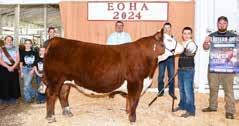
The Reserve Grand Champion Steer and Reserve Bred & Owned was shown by Jennifer Keets of Erie County.
The Grand Champion Bred & Owned Bull was shown by Jennifer Keets of Erie County.

The Reserve Grand Champion Bred & Owned Bull was shown by Riley Evoniuk of Greene County.
The Grand Champion Cow/Calf Pair was shown by Natalie Liston of Ashland County.

The Reserve Grand Champion Cow/ Calf was shown by Tanner Ostgaard of Licking County.
Showmanship Winners for the event are:
Overall - Delaney Chester Senior Division - Jess Miller Inter. Division - Delaney Chester Jr. Division - Kinnalee Connolly Beginner Division -Tripp Ostgaard First Year Division - Bailee McDoorman
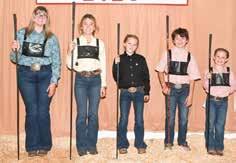
Congratulations to Pam Haley of West Salem, Ohio, who was selected as the 2024 Lifetime Promoter.
Established in 2019, the Lifetime Promoter Award recognizes those who make significant contributions to the promotion and advancement of SimGenetics and the ASA.
Haley Farms produces SimGenetics seedstock and Pam’s children, Charlie and Sammi are getting invovled in AJSA. Read Pam’s full story at https:// bit.ly/2024lifetimepromoter.
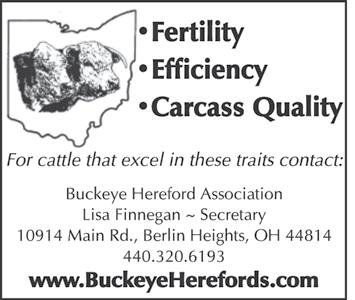






ARE NCBA’S NEXT STEPS NOW THAT THE RULE IS
NCBA secured $15 million in the Consolidated Appropriations Act of 2024 to direct APHIS to “provide… electronic identification tags and related infrastructure needed for stakeholders to comply with the proposed rule.” We will continue to engage with APHIS and state animal health officials to ensure this funding makes it to the ground.
We are also advocating for an additional $15 million in the FY25 Agriculture-FDA Appropriations Act. That bill has not yet passed the House (as of writing), but we will continue to work to include support for producers in any final FY25 appropriations package.
Currently, the only technology APHIS has been asked to approve as an official means of electronic identification are low frequency RFID tags numbered with the “840” prefix. We will continue to urge USDA to approve more types of EID tags, so implementation of this rule can keep pace with the rapidly evolving technology on the market. Having more options available will also drive down the cost per tag and alleviate the long delays from tags being on backorder.
NCBA is supporting and advocating for a number of legislative solutions that would make the data privacy protections for producers using EID tags more explicit We are working with Congressman Dusty Johnson (R-SD), Senator John Barrasso (R-WY), and others to accomplish this.
In addition to other safeguards, NCBA is confident that the legal precedent set in the case American
Farm Bureau Federation v. Environmental Protection Agency (2015) protects EID tag and animal identification number data from disclosure under the Freedom of Information Act. We will continue raising this with APHIS.
For the latest information on accessing tags, please contact the Ohio Department of Agriculture Division of Animal Health at (614) 728-6220 or OCA at (614) 873-6736 or cattle@ohiocattle.org.
The Youth Beef Leaders Seminar is Dec. 11-13, 2024, at the CAB office in Wooster, Ohio. This event welcomes the NJAA Board of Directors, Miss American Angus, and leaders from the
the Canadian Junior Angus Association. Additionally, CAB will accept five qualified candidates for an all-expense paid trip to join this year’s class. Eligible applicants should be enrolled in undergraduate or graduate college with academic and career goals associated with the field of animal science, meat science, food science, or any other related agricultural industry. Certified Angus Beef sees value in producers completing animal care training like Beef Quality Assurance or other equivalent certification programs to convey their commitment to cattle care to consumers. Applicants will be asked to provide their certification status in such programs. To be considered for attendance, complete the application by Oct. 11, 2024. Winners will be contacted by phone by Nov. 15. Questions can be directed to KLee@certifiedangusbeef.com.
Cattlemen
Boyd
Visit www.ohiocattle.org for a complete list of events
MEMBER SERVICES
Linde Sutherly, Ch. | Jm Rogers, V. Ch.
Membership
Lindsey Hall, Ch.| Jim Rogers, V. Ch
Ohio Cattleman Magazine
Jaymes Maciejewski, Ch. | Dale Taylor, V. Ch.
Steak Barn/Taste of Ohio Café/FSR
Linde Sutherly, Co-Ch. | Lindsey Hall, Co-Ch.
Young Cattlemen’s Conference
Tyler Humphrey, Ch.| Emily Warnimont, V. Ch.
Annual Meeting/Awards Banquet
Linde Sutherly, Ch. | Austin Cole, V. Ch
Youth Programs BEST & Buckeye Breeders Series
Shane Riley, Ch
PUBLIC POLICY
Frank Phelps, Ch. | Kirsten Nickles, V. Ch.
Agriculture & Food Policy
John Ferguson, Ch. | Joe Grubbs, V. Ch.
Cattle Health & Well-Being
Kirsten Nickles, Ch. | Jaymes Maciejewski, V. Ch.
Live Cattle Marketing
Mark Goecke, Ch. | Jim Jepsen, V. Ch. Austin Cole, V.Ch
International Trade
Jason Dagger, Ch.| Dale Taylor, V. Ch.
Property Rights & Environmental Mgt.
Andy Lohr, Ch. | Jason Dagger, V. Ch.
PAC – Political Action Committee
Frank Phelps, Ch.| Tyler Humphrey, V. Ch.
Tax & Credit
Tom Karr, Ch. | Jim Rogers, V. Ch.
Lindsey Hall, Ch. | John Ferguson, V. Ch
Replacement Female Sale
Pam Haley, Ch. | Lindsey Hall, V. Ch.
Ohio Beef Expo
Shane Riley, Ch. | Joe Foster, V. Ch.
Frank Phelps, Ch. | Andy Lohr, V. Ch
Contact


OCA and NCBA supported a fundraiser for Congressman Max Miller. Attending was House Majority Whip Tom Emmer.
OCA and NCBA supported a fundraiser for Congressman Mike Rulli. District 7 Director Joe Grubbs attended on behalf of OCA and NCBA.
Congressman Jim Jordan met with Executive Director Elizabeth Harsh and OCA board member Frank Phelps to discuss high priority issues for Ohio’s cattle industry.



OCA and NCBA supported a fundraiser for Congessman Troy Balderson. The event was hosted by Barb and Phil Watts of Licking County.
Linde Sutherly, OCA Treasurer and District 8 Director supported a political fundraiser for Congressman Mike Carey on behalf of OCA and NCBA.
